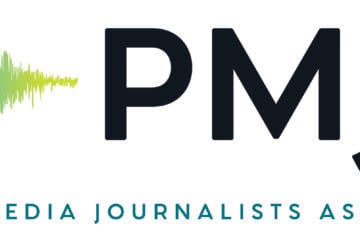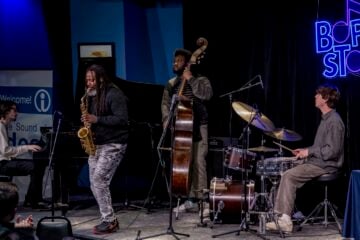Change is slow, but pubcasters are ready to become anchors of local news ecosystems

ihor lishchyshyn / iStock
In a four-part series, the co-authors of “The Growing Strength of Public Media Local Journalism” have excerpted their findings for the Current readership. In the report, the co-authors make the case for why public media stations are well positioned to play a meaningful role in efforts to rebuild local news. You can find the full report, including an introduction, methodology and report background, here. This research was made possible through the generous support of the Wyncote Foundation, for which we are grateful.
Having reviewed the sustainability, capacity, and reach of the public media system, as well as the insights generated through this assessment, we turn now to address the limitations of our analysis and weaknesses within the public media system.
Public media professionals are having to define and refine what local news means.
“Local news” means different things in different markets. In many public media organizations, local news means metro or regional news, rather than community or hyperlocal news. As public media seeks to exert more leadership in local journalism, we see public media professionals working to become more specific about the different needs of the audiences served. Defining “local news” includes examining what it means to “serve the public.” In broadcast formats, reaching the local public entails attracting people across wide geographic areas to tune into a radio or television signal. Embedded concepts of a general broadcast “public” do not translate well into other media, particularly digital media, where media consumers are used to more tailored content.
Institutional change is slow.
Public media institutions have many stakeholders; the most successful ones are deeply embedded in their communities and in the wider public media system networks. Some licensees are part of university systems, others operate as independent nonprofit organizations. Many are required by CPB to have community advisory boards. The multiple overlapping stakeholder groups lend a richness and heft to public media — they also can significantly slow the process of change. Investments in public media are not an “instant results” proposition. Change tends to be slow but long-lasting — and highly dependent on visionary leadership and strong upper management teams.
As we assess the pace of change we can expect in the public media system, one critically important organizational feature stands out: whether the station’s public broadcasting license is held by an educational institution or a community-based nonprofit. Of the licensees supported by the CPB, about 46%, or 184 public radio licensees, are owned by a university. Nearly 43%, or 171 public radio licensees, are community-owned. The remaining 11% of public radio licensees are state and local-authority owned.1
Institutional ownership by a university, community college, or state entity provides financial resources and shared services but can also create confusing and conflicting governance because other interests (within universities, for example) can dominate the agenda. Institutional licensees in universities or as part of state agencies can face constraints on content development, fundraising, hiring, policy, and human resources. Indeed, the most innovative stations have tended to be “community licensees,” that is, public broadcasters governed independently from any other institution. WNYC in New York and WBEZ in Chicago are two examples of stations that became more dynamic after they changed their local government ownership model and became independent community licensees.
Apart from licensee ownership status, the size of a licensee in terms of personnel and budget also deeply influences the rate of change. While larger licensees enjoy a high degree of functional specialization, it is generally true that larger organizations tend to change more slowly than smaller ones.
Growing audience and public service over the airwaves has often meant underserving already underserved audiences.
The irony of public media’s secret to audience growth is that public media content often superserves those most likely to listen often and contribute: educated, white, affluent audiences. The concerted and successful audience development efforts beginning in 1988 have produced a large, loyal, supportive audience of mainly educated, white listeners and viewers. Perhaps the most critical insight of those audience studies was that level of education is the variable that most closely predicts listening, loyalty, and ultimately giving.
Public media is being called to account for the audience it has created, and many efforts are underway to expand content and service to truly diverse audiences. Given the slow pace of institutional change, this will take time and leadership. But because the institutional mission of public media highlights the value of public service, change is happening.
Gradual changes to broadcast listening and viewing habits will continue to put pressure on licensees to evolve or lose relevance.
The pandemic led to a dip in broadcast listening and surfaced questions about changing habits among consumers. Listening levels in closely researched markets dropped from about 9 million listeners in winter 2020 to about 6.7 million listeners in spring 2020. By fall 2021, that number had returned to about 8.1 million listeners.2 The Radio Research Consortium, a nonprofit research group for noncommercial radio stations, attests in its “Fall 2021 Radio Trends From PPM Markets” report that “90% of listening (AQH) is back.” While in-home listening maintained roughly the same numbers of listeners throughout the pandemic, the out-of-home listening numbers have yet to fully return to their pre-pandemic numbers.3
But here again, public television and public radio are on different trajectories. Public television is well-known to suffer from “zombie stations” — licensees programming stations almost entirely with repeats of national content and producing little or no local content at all. Indeed, public television as a whole suffers from a lack of local news programming. This is partially because, unlike in public radio, the public television’s flagship national news program, PBS NewsHour, did not evolve the kind of local/national news programming blend and programming partnerships that have helped seed local journalism in the radio system.
In sum, while over-the-air broadcast viewing and listening continues a gradual decline, that decline is far from evenly distributed over time and place. The push-and-pull of fluctuating viewing and listening habits is putting pressure on licensees to evolve even more quickly and become even more sophisticated in the ways they develop news and information products and deliver those to audiences across platforms.
Inequalities in the public broadcast system mirror inequalities in the country as a whole.
Public media growth and evolution have been concentrated among licensees whose metro areas have tended to enjoy disproportionate population and economic growth. As shown above, amongst the roughly 120 public radio licensees one of our authors examined, seven earned more than $25 million each in FY2020 revenue, while another 15 stations earned more than $10 million each. There is a long tail of smaller stations with revenue earnings of less than $10 million, and most stations fall into this third category.
CPB, NPR, PBS, and other national organizations work hard to help mitigate these imbalances at a network level. But differences in resources and capacity remain. For licensees that have grown large enough to have specialized development staffing, the pace of growth increased, while others have stagnated.
Conclusions
We hope our data and insights shed light on an area of strength and evolution in local journalism. We also hope that policymakers, industry leaders, and journalism funders will draw lessons from the growth and expansion of public media that will contribute to the overall task of rebuilding local news. In this final section, we offer three key lessons learned from our public media research that should inform those working to rebuild local news.
Lesson 1: The “network effect” of public media cannot be overstated.
Our first lesson is that building and nurturing multifaceted networks among news organizations is just as important as boosting direct support for newsgathering. Public media organizations and public media audiences have benefited hugely from the highly networked structure of the field. The networks supporting public media take many forms: content collaborations, shared services, professional associations. The most visible network is the formal local/national content sharing system, which is supported by shared distribution technologies.4 But the infrastructure backbone network is one of many supporting the growth and vitality of public media.
Other layers of shared infrastructure have evolved over time — including shared digital infrastructure built and maintained through network leaders like NPR and PBS. While these infrastructures have tended to support national sharing to local partners rather than vice versa (with the exception of PRX), active and robust conversations are taking place about how to build the next set of digital infrastructure that supports and enhances stations as local news organizations.
Policymakers, journalism funders, and industry leaders in other parts of media can learn from the successes of public media networks and invest in growing the layered, networked capacity of news organizations operating in other media.
Lesson 2: Media organizations and media systems take time to mature.
Our second lesson is that true change in local media takes time, because media organizations and media systems require time to mature. Most public media stations are at least 50 years old. Many digital news organizations in operation today, by contrast, are less than a decade old. For example, according to the Institute for Nonprofit News’ INN Index published in July 2022, more than 135 member organizations launched within the past five years, about double the number over the prior five-year period.5
But we have also learned from our research that smart investments can speed the maturation of organizations and evolution of local media systems. From our analysis of the drivers of growth in public radio, we would agree with funders like the American Journalism Project that investing in the business-side capacity of new news organizations and supporting the growth of their development staff should yield positive results for sustainability. Our research shows that the pace of growth amongst the public radio stations that have become old enough and large enough to have specialized development staffing has increased relative to peers that have not made those investments.
The current strength and vitality of public media took decades to come to fruition. Because organizations and media systems take time to mature, funders and industry leaders should continue to take the long view in the task of rebuilding local news.
Lesson 3: Many public media organizations are ready to serve as anchor institutions for their ecosystems.
Our final lesson relates to the huge opportunity that public media presents for those looking to rebuild local news. The last decade has seen an explosion of experimentation in local news and the launches of new news organizations as the newspaper-based local media system has atrophied. If the challenge is to sustain and grow these new experiments and new newsrooms, then ecosystem-level leadership has to be in place in order to achieve greater impact with fewer resources and to foster collaboration instead of competition.
We would argue that many public media organizations are now ready to step into the role as anchor institutions in their local news ecosystems — providing the platform services, governance, and coordination support that their national network counterparts provide for local stations. Strong public media organizations are absolutely ready to acquire other forms of news media, as has happened in Chicago, Dallas, Los Angeles, New York, and elsewhere. Public media acquisitions of news media providers are one of the most exciting developments in public media in recent years and show huge promise for rebuilding local journalism. We anticipate that licensees capable of anchoring local news ecosystems will become even more critical going forward as commercial print-based local media risks disappearing altogether.
Elizabeth Hansen Shapiro is CEO of the National Trust for Local News. From 2020–22, she was a Senior Research Fellow at the Tow Center for Digital Journalism at Columbia Journalism School. Previously, Elizabeth led news sustainability research at the Shorenstein Center on Media, Politics, and Public Policy at the Harvard Kennedy School. She was the Research Director for the Membership Puzzle Project’s Guide to Membership and the Public Media Mergers Project. She received her Ph.D. in Organizational Behavior from Harvard Business School.
Mark Fuerst is founder of Innovation4Media (I4M), which has worked with public media stations, networks and association leaders to understand the public service and business opportunities of digital media. Since 2012, Mark has managed the Wyncote Foundation-supported Public Media Futures Project, to study the changing media landscape. He was co-founder and Executive Director of the Integrated Media Association (IMA). From 1986 to 1997, Mark was General Manager of WXPN-FM in Philadelphia, the station that developed the AAA music format for public radio. He was co-creator and executive producer of World Café, NPR’s AAA music program that airs on 581 stations.
Caroline Porter is a media strategist and researcher. She serves as Director of Impact and Strategic Partnerships at the National Trust for Local News. Caroline worked as a staff reporter for The Wall Street Journal in the Chicago and Los Angeles bureaus and served as an adjunct lecturer at Northwestern University’s Medill School. As a Fulbright Scholar in Northern Ireland, Caroline researched the role of media in the post-conflict region and earned a master’s degree with honors from Ulster University. You can find her on Twitter at @carolineporter.
- Data provided by Station Resource Group in November 2021. ^
- Data provided by the Radio Research Consortium (RRC) in a fall 2021 report on trends from PPM markets. ^
- The bounce-back of listening following the pandemic slump varies by market. Persons ages 45–64 represent the largest cohort of listeners for public radio, followed by the persons 25–44 cohort. ^
- Shared distribution technologies include the Public Radio Satellite System and PRX in the case of public radio; and, for public television, sIX operated by PBS, the PBS Passport OTT content distribution platform, and several independent interconnection services that provide centralized distribution functions including contracts and fees between producers and stations. ^
- Emily Roseman, Michele McLellan, Jesse Holcomb. “INN Index 2022: Enduring in crisis, surging in local communities,” Institute for Nonprofit News, accessed on 29 Sept. 2022 at: https://inn.org/research/inn-index/inn-index-2022/ ^






